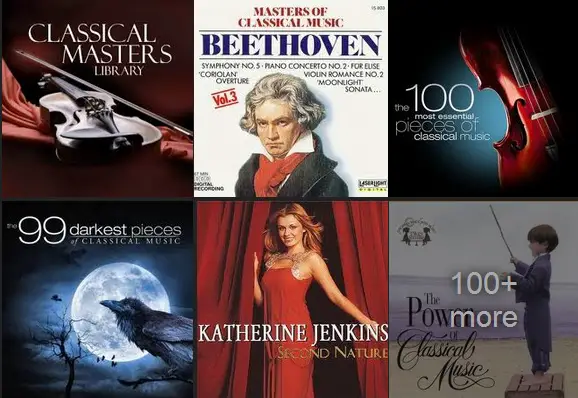
Concerto in classical music is a composition for an instrumental soloist and orchestra. Here’s more on this form of composition.
What is a Concerto
Concerto is a musical composition for instruments in which a solo instrument is set off against an orchestral ensemble; the soloist and ensemble are related to each other by alternation, competition, and combination. A concerto is usually made of three parts (called movements).
“Concerto” is an Italian word, meaning “playing together”. Concerto is singular, plural is concerti or concertos.
So in a concerto, you will have a pianist or a violinist right in the front of the whole orchestra (backing them up).
In a piano concerto, the piano serves as the solo instrument and it is accompanied by an orchestra. In a violin concerto, its the violin that serves as the solo instrument.
In some cases, instead of a soloist, you will have a small group of instruments at the forefront, playing with the orchestra.
Symphony vs Concerto
A concerto is a musical composition for a solo instrument (or few instruments) and is accompanied by a symphony orchestra (especially one conceived on a relatively large scale).
An Orchestra usually plays a symphony (a piece for orchestra) or they might play a concerto (with a soloist).
Although the concerto soloist is the protagonist, in most great concertos, the orchestra plays an equally important part, conversing back and forth with the soloist.
Sonata vs Concerto
Interestingly, many concertos are written in the Sonata Allegro form.
In fact, the introductions in most of Mozart and Haydn concertos’ are like miniature sonatas, before the soloist comes in to play.
While there are many similarities in the structure of a concerto to a sonata, the thing to remember is that concertos are soloists, or small group of instruments, that perform along with an orchestra.
Characteristics / Form / Structure
A classical concerto is usually played in three movements.
- A quick opening movement in sonata form including a cadenza (which may be improvised by the soloist).
- A slow, free expressive movement
- A faster rondo
The average concerto lasts about 30 minutes, and the three movements usually fall into this scheme: FAST-SLOW-FAST. This setup also suits the soloist, as it allows her to show off her amazing technique in the first and last movements, while playing something very soulful in the middle.
Most composer, including Mozart and Beethoven, followed this structure, but there are some pieces where composers took the liberty to deviate from the above structure (to try something different).
Several composers introduced innovations, the more popular one being Liszt’s single-movement concerti.
Soloists are Paid Handsomely
Soloists are paid well – sometimes $30,000 to $50,000 for one performance. But then Orchestras know that they will make the money back.
Its because the audience love to watch concertos. They come to see (and hear) a famous soloist; to witness flashy pyrotechnics. Most concertgoers buy a season ticket to hear a famous soloist.
The soloist usually stands or sits just to the left of the conductor. The piano is always situated with the keyboard on the left side, and you’ll have more fun if you can see the pianist’s hands.
Soloists Don’t Refer to Sheet Music
Well, let this not be an excuse for you to ditch the sheet music, especially if you’re a student. To be able to play from sheet music is an important skill. And these guys have that skill.
Its just that most soloists playing concertos almost always play from memory, unlike the other musicians in the orchestra, who read from sheet music, or the conductor, who’s probably using a big, bound score.
This is something that has been happening for centuries, from the days of the great masters, such as Franz Liszt (1811-1886), who were considered the “rock stars” of their generation.
The audience expects a star as the soloist, who shows off their body expressions, pounds the keyboards, moves the head…something that’s not possible while looking at the sheet music (or you can say that stars just don’t want to mess with sheet music, at least while performing a concerto).
KeytarHQ editorial team includes musicians who write and review products for pianists, keyboardists, guitarists & other musicians. KeytarHQ is the best online resource for information on keyboards, pianos, synths, keytars, guitars and music gear for musicians of all abilities, ages and interests.



Leave a Reply